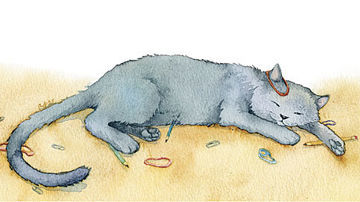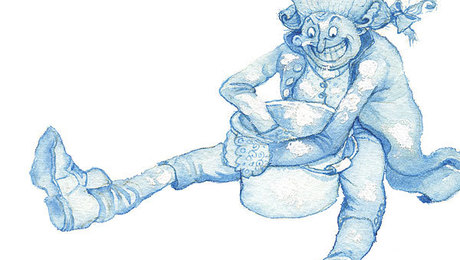Red River Gumbo
Great moments in building history: Covered in muck
The frequently vicious vagaries of spring weather in Winnipeg make early season building a very iffy proposition. A case in point was a fence my partner, Randy, and I took on last year.
By the end of April, the weather was balmy enough (for Winnipeg), with afternoon temperatures in the high 50s or low 60s, and the ground had dried and firmed up enough to start drilling post holes. Drilling day arrived, and by noon we had 37, 10-in. by 4-ft. deep post holes and shoulders that were just beginning to turn pink from the warm sun. Unfortunately, we also had 37 piles of heavy, wet, sticky Red River gumbo, and somehow we had to get rid of it.
This muck is the principal substrate of the area and is composed primarily of dense clay and super glue. Many a shovel has been hurled across a construction site, frequently with operator attached, in trying to dislodge this glop from the implement.
Daunted by the prospect of subjecting our middle-aged, winter-soft bodies to the back-breaking rigors of disposing of the mess, we arranged for a helper (locally known as a grunt) to be on hand the next day. He could take care of the task and free us up for the more cerebral activities of setting and plumbing posts.
The weather gods evidently disapproved of our tender regard for our fragile, flaccid selves and overnight sent 6 in. of snow and made the mercury plummet to the teens. This left us twiddling our tools for a week before conditions permitted a return to the site.
What we found was distressing. The melting snow had perversely dragged about half of the dirt back into the post holes. Randy and I resigned ourselves to hand-augering the muck back out while our grunt, Tucker, tried to get the stuff into our trailer.
At the end of the day, we had the holes pretty well cleaned out, but poor Tucker was having a terrible time with that miserable mud. It was almost impossible to shovel into the wheelbarrow and completely impossible to dump out. The muck had to be scraped out of the barrow, scraped off the shovel into the trailer and scraped again out of the trailer at the landfill. I think Tucker got about eight of the 37 piles knocked off that day.
The next day Randy and I were setting posts on one side of the house while Tucker labored at his mud piles on the other. As we worked, we talked of how sorry we felt for Tucker doing that awful job, how glad we were that he was doing it and not us and how many days we would have to pay for him to get it done.
At lunchtime we were pleasantly flabbergasted to see that our intrepid grunt had managed to do away with about half the remaining piles, but he appeared to be wearing a good portion of the muck. He looked as if he’d been rolling in it! His grin showed white through his mask of mud, and he demonstrated his method for us.
The shovel had been retired. Tucker got down on all fours and started rolling the gumbo into basketball-sized chunks with his hands. It was then a simple matter to deposit these balls in the wheelbarrow and transfer them to the trailer. Slam-dunking the mudballs at the landfill took a fraction of the time the previous day’s scraping method had required.
—Geoff Ireland, Winnipeg, Man., Canada
Fine Homebuilding Recommended Products
Fine Homebuilding receives a commission for items purchased through links on this site, including Amazon Associates and other affiliate advertising programs.

Handy Heat Gun

Affordable IR Camera

Reliable Crimp Connectors


























